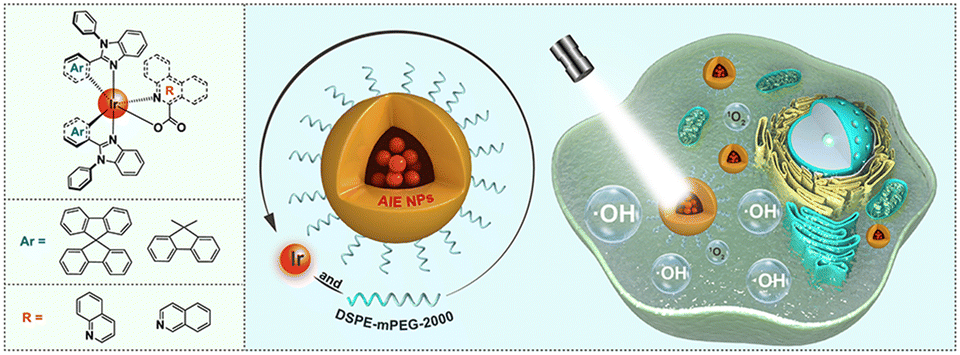AIE-active Ir(iii) complexes as type-I dominant photosensitizers for efficient photodynamic therapy†
Abstract
The ability of a photosensitizer (PS) to generate reactive oxygen species (ROS) including type I oxygen free radicals and type II 1O2 is pivotal for photodynamic therapy. Luminescent Ir(III) complexes are effective PSs with high 1O2 generation ability owing to their high intersystem crossing ability and effective energy transfer to 3O2. However, so far, reports on type I ROS based on ˙OH generation induced by Ir(III) PS are still rare. In this work, four novel aggregation-induced emission (AIE)-active Ir(III) PSs, namely MFIriqa, MFIrqa, SFIriqa, and SFIrqa have been designed and synthesized, which show highly efficient emission in the aggregated state. Cell imaging experiment results indicate that all four Ir(III) PSs can effectively improve the signal-to-noise ratio of imaging by reducing the interference from the background due to their fascinating AIE properties. Importantly, in vitro, Ir(III) PSs MFIrqa, SFIriqa, and SFIrqa nanoparticles show obvious photodynamic activity toward cancer cells upon irradiation accompanied by type I ˙OH generation, which may be attributed to the unique excited-state characteristics of Ir(III) complexes. This work will provide guidance for the construction of a type I photosensitizer based on the AIE-active Ir(III) complex, which offers great advantages for potential clinical applications under hypoxic conditions.

- This article is part of the themed collection: Spotlight Collection: Aggregation induced luminescence of metal complexes


 Please wait while we load your content...
Please wait while we load your content...